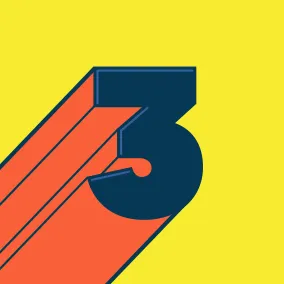Triple Threat: The Challenger, The Catalyst, & The Finisher

Peyton Crump, Former Design Director
Article Category:
Posted on
What are the triple-threat disciplines that come to mind as we consider notable peers and mentors in our field?
The “triple threat” is a concept that has fascinated me ever since I was a kid. I heard it used to describe either an athlete or an entertainer who had mastered a combination of three disciplines that together made him or her exceptional. For the basketball player, it was someone who was a great shooter, rebounder, and defender (think Lebron James). For the entertainer, it was someone who was a great actor, singer, and dancer (think Beyonce).

This led me to a curious thought recently: What combination of disciplines in our field would make a person a "triple threat.” My thinking ranged from hard-skill to soft-skill disciplines, and here’s the trio—more on the soft side—that rose to the top for me.
The Challenger
As designers and thinkers, we’re meant to challenge habituation or problems and do something about them. Tony Fadell, designer of the iPod and the Nest, shares that the first secret of design is noticing, but he elaborates further by saying:
Designers, innovators and entrepreneurs... it's our job to not just notice those things, but to go one step further and try to fix them.
Motivate Design out of New York challenges themselves and others to question the status quo with The What If Technique. The challenger is insatiably curious, skeptical of assumptions, and realizes that the real problem may not be readily apparent without deep observation and questioning. He or she digs deep into foundations, systems, roots, and habits, because it’s in these places that insights are often discovered.
The Catalyst
The catalyst moves things forward productively, whether in a leadership role or not. She or he has a gut instinct when it comes to reaching out to and connecting people to get things done. The catalyst does their homework, has focus, and is organized; talks less and does more; knows how to facilitate brainstorming, discussions, and decision-making without having to dominate them; lowers the angst and increases the clarity, productivity, and motivation of the group; and is open to navigating the conflicts and obstacles that come with any worthwhile initiative. Perhaps most of all, the catalyst asks the right questions at the right time.
The Finisher
Many of my coworkers, friends, and I have wrestled with the same problem, especially when it comes to solo passion projects: We have a hundred things started but a real problem finishing them. Creative ideas often die at some sad intersection of not-enough-time, perfectionism, distraction, and second-guessing. Professional projects, on the other hand, have to be finished, but still can feel like they’re barely chugging over the finish line when it comes to team interest and enthusiasm. I so appreciate teammates who bring the same energy and dedication to the exciting early stages of project as they do the last grunt-it-out details of a launch or release. In other words, they know how to finish strong. The finisher seems to mentally prepare for the fact that finishing is hard and even scary. It takes endurance and confidence, and it’s not that different than if you were going to run a marathon. As Robbie Whiting says:
It’s finishing that takes perseverance, and as I’ve found, true brilliance.
Starting is fun. Finishing is grueling.
I look for people who finish things. A portfolio of partially-realized ideas doesn’t fly in today’s design and technology marketplace. One finished thing is worth ten incomplete things.
Have thoughts on your own triple threat combo or maybe even the killer dream team? Shout em out.